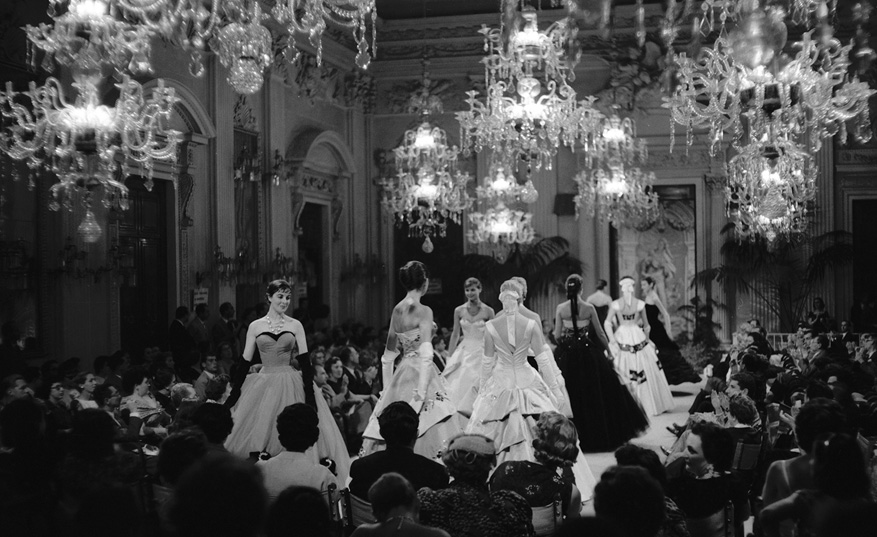All the credit goes to Giovanni Battista Giorgini – ‘Bista’ to his friends – an elegant gentleman who led a foreign trade office in Florence. Until then, France, and Paris in particular, had been the place for fashion. But Giorgini sensed that this could change, and in the winter of 1952 he organised Italy’s first fashion show in the ballroom of his home, Villa Torrigiani in Via dei Serragli. On the runway were the country’s top dressmakers: Carosa, Fabiani, Simonetta, Schuberth, Fontana, Veneziani, Noberasco, Marucelli, Emilio Pucci and Gallotti. The event was a resounding success which shook the fashion scene on the other side of the Alps.
Impatient, Bista unleashed another incursion: in July 1952, again at the behest of Giorgini, fashion shows moved to the sumptuous Sala Bianca of Palazzo Pitti, named for the pure white stucco decoration in Neoclassical style and today part of the Palatine Gallery museum complex. Giorgini took care of the organisation until 1965, contributing to the success of what rapidly became known as the Made in Italy movement.
The most distinguished designer discovered by Giorgini is undoubtedly Roberto Capucci, but he is certainly not the only one. Many labels, some of them already existing, owe their remarkable leap in quality and conquest of new markets to the fact that they were invited to show in the Sala Bianca: the crucial international launches of Sarli, Galitzine, Lancetti, Balestra, Krizia, Valentino and many others took place in Florence.
New labels were sometimes presented in special events combining new talent and Sala Bianca veterans, and other times with special dedicated presentations. This was pleasurable and sophisticated fashion in which craftsmanship, exquisite fabrics and style were ever-present, with attractive prices for the world market and an effective and rapid distribution system: creativity and knowledge of the sector were key to the success of Giorgini and Made in Italy fashion, which this year celebrates its 70th anniversary.
(tel. @Archivio Giorgini)



